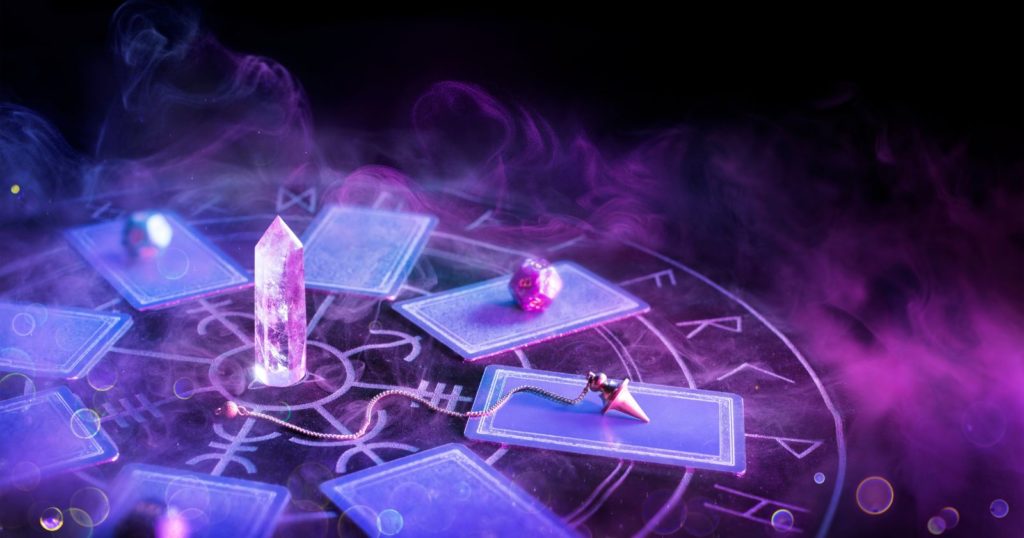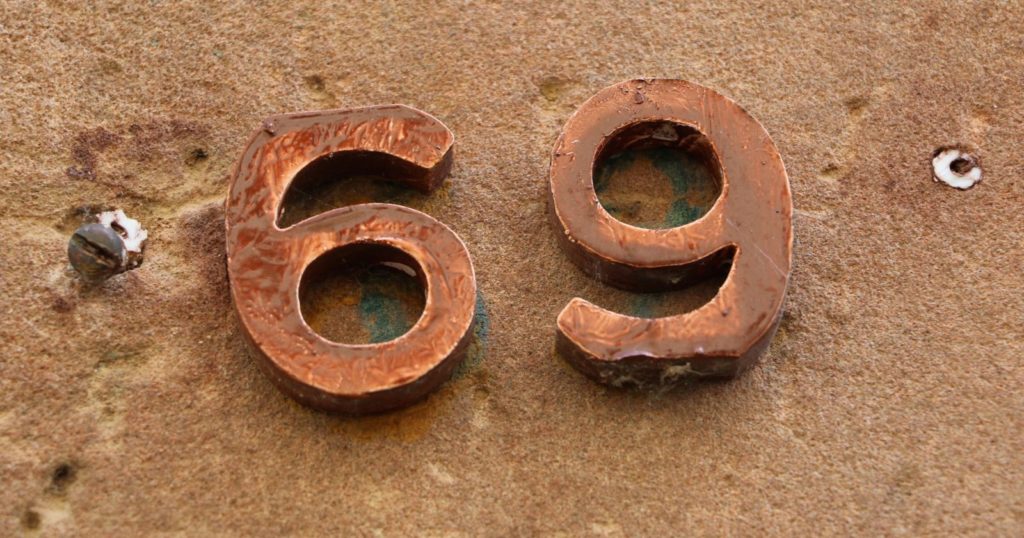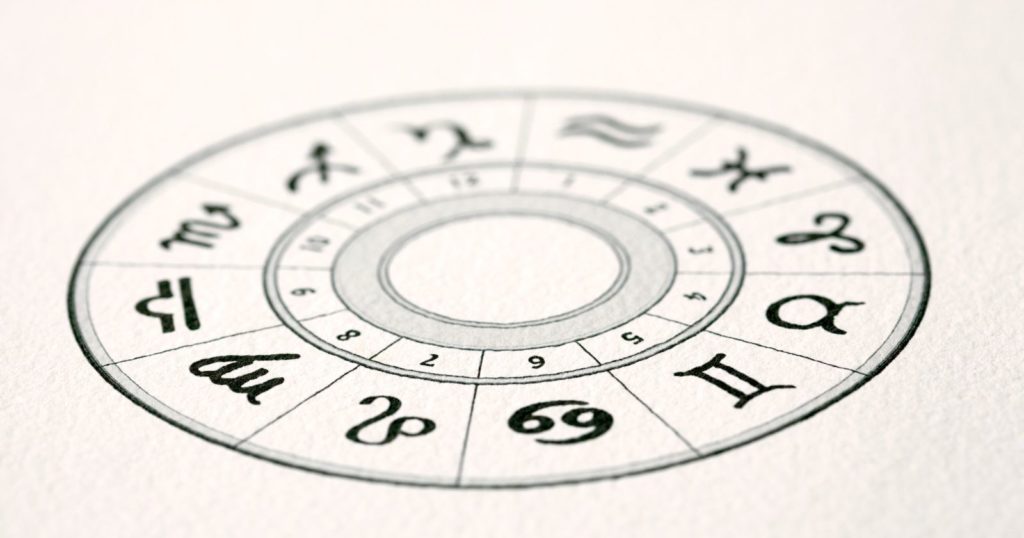1. The Mystery of the 8 of Swords
The 8 of Swords, with its enigmatic imagery, has long captivated both seasoned tarot readers and curious novices. Its depiction, while seemingly somber, is a rich tapestry of symbolism, emotion, and narrative. Delving deeper into this card’s essence helps shed light on its multifaceted nature.
A. The Rich Symbolism
The 8 of Swords is more than just an image of a bound and blindfolded woman. Every detail, from the landscape to the placement of the swords, holds significance:
- The Water: Often overlooked, the water in the background represents emotion and intuition. It suggests that the solution to our perceived entrapment might lie in addressing our emotional well-being or listening to our inner voice.
- The Castle: In the distance, a castle can sometimes be seen. This represents a place of safety, knowledge, or a goal. It’s a reminder that even in moments of confusion or restriction, our objectives or safe havens are still within reach, albeit requiring effort.
- The Gaps between the Swords: A keen observer will notice that the swords don’t form a complete barrier around the woman. This signifies potential paths to freedom and indicates that the confinement might be more psychological than physical.
B. Historical Context
The tarot has evolved over centuries, with each era adding layers of interpretation and meaning. In medieval times, swords were symbols of power and authority. Having eight of them surround a figure signified significant pressure or external expectations. This historical context offers a perspective on the card as a reflection of societal pressures or the weight of authority.
C. Modern Interpretations
In today’s fast-paced world, the 8 of Swords can resonate deeply with many. It might signify:
- Mental Health Challenges: Feelings of being trapped, overwhelmed, or paralyzed by choice can be indicative of anxiety or depressive disorders. The card can serve as a nudge to seek help or address underlying issues.
- Decision Paralysis: With limitless options in modern society, from career paths to personal choices, the 8 of Swords might represent the overwhelming nature of having too many choices and the resulting paralysis.
- The Echo Chamber Effect: Just as the woman is blindfolded and surrounded by swords, we too can become trapped in our echo chambers, especially in the age of social media. The card might be suggesting that one needs to step out, gain fresh perspectives, and break free from self-imposed thought barriers.
2. Deciphering the “Yes or No” Conundrum of the 8 of Swords
While the tarot offers profound insights, many approach it seeking clear, direct answers, especially in the realm of “yes or no” questions. The 8 of Swords, laden with ambiguity, can challenge this desire for straightforwardness. However, when understood in depth, it can provide a rich tapestry of guidance even in these binary contexts.
A. Context is King
Every tarot reading is a dialogue between the seeker, the reader, and the cards. The answer the 8 of Swords provides hinges heavily on the nature of the question posed:
- Relationship Questions: If you’re asking about the potential of a new relationship and the 8 of Swords appears, it may suggest feelings of entrapment or a lack of clarity in the relationship. The card could be hinting at the need for introspection or open communication before moving forward.
- Career Queries: When inquiring about a job opportunity, the card may imply that the position might feel restrictive or not align with your personal values. It could also suggest that you may feel bound by external pressures or expectations in that role.
- Personal Growth: If the question revolves around personal development, the 8 of Swords might point to internal barriers or self-limiting beliefs that need addressing.
B. The Dance of Cards: Position and Surrounding Influences
The 8 of Swords doesn’t exist in isolation during a reading. Its meaning can be amplified, muted, or nuanced by neighboring cards:
- With Positive Cards: If flanked by cards like The Sun or The World, the challenges hinted by the 8 of Swords might be short-lived or more easily overcome, potentially tilting the answer more towards a ‘yes’.
- With Challenge Cards: When accompanied by cards like The Tower or Ten of Swords, the cautionary note of the 8 of Swords is emphasized, suggesting more significant obstacles that might make a ‘yes’ harder to achieve.
- Positional Context: In spreads where positions signify past, present, future, or other specific aspects, the 8 of Swords takes on added layers. For instance, in a past position, it might indicate a period of confinement you’ve moved past, while in a future spot, it could be a forewarning.
C. The Intuitive Pulse
Tarot reading is an art as much as it’s a science. The intuitive pulse a reader feels during the session plays a crucial role:
- Sensations and Feelings: Sometimes, despite the inherent ambiguity of the 8 of Swords, a reader might strongly feel it leaning towards a ‘yes’ or ‘no’. This intuition, built over numerous readings and experiences, is invaluable.
- Personal Biases: It’s also essential for readers to remain aware of their biases. While intuition is a potent tool, it’s crucial to differentiate between a genuine intuitive nudge and personal biases influencing the reading.
- Feedback Loop: Engaging with the seeker, understanding their reactions, and adjusting the reading’s flow based on this feedback can also help in deciphering the card’s message more clearly.
3. Practical Applications of the 8 of Swords in Everyday Life
The magic of tarot extends beyond divinatory practices. Tarot cards, like the 8 of Swords, can serve as mirrors, reflecting facets of our psyche, and guiding us in the tangible realm of our daily existence. Embracing the lessons of the 8 of Swords can illuminate pathways, stir introspection, and catalyze personal growth.
A. Recognizing Self-imposed Limitations
We often create our barriers, sometimes without even realizing it. The 8 of Swords, in its poignant depiction, is a stark reminder of this human tendency.
- Challenging Beliefs: Growing up, we inherit beliefs and perceptions from our surroundings. Not all of these serve our best interests. Regularly questioning and challenging these beliefs can free us from mental confines.
- Affirmations and Visualization: Techniques like affirmations can rewire our thought patterns. Visualizing ourselves free from the chains, much like the woman in the card, can be a powerful exercise in breaking free from self-imposed limitations.
- Seeking Therapy: Sometimes, our limitations stem from deeper psychological roots. Engaging with a therapist or counselor can aid in recognizing and addressing these barriers.
B. Embracing Uncertainty
Life’s journey is replete with uncertainties. Instead of being daunted, using them as stepping stones is a lesson the 8 of Swords subtly imparts.
- Mindfulness and Presence: Being in the moment, practicing mindfulness, can alleviate the stress of uncertainties. It equips us to deal with challenges as they come, rather than being paralyzed by the fear of the unknown.
- Flexible Planning: While planning is crucial, rigidity can be counterproductive. Adopting a flexible approach, much like water navigating around obstacles, can be more fruitful in uncertain scenarios.
- Acceptance: At times, the best approach is acceptance. Not all uncertainties can be resolved immediately. Recognizing and making peace with this fact can lead to inner calm.
C. Seeking External Perspectives
Our perspective, no matter how broad, has its limits. The 8 of Swords, with its blindfolded protagonist, emphasizes the value of external viewpoints.
- Engaging in Dialogue: Regular conversations with friends, family, or peers can provide fresh insights into challenges we might be facing. Sometimes, just voicing out our thoughts can lead to clarity.
- Mentorship: Seeking a mentor, especially in areas we feel restricted, can be transformative. Their experiences and guidance can shed light on paths we might not have considered.
- Continuous Learning: Reading books, attending seminars, or even engaging with diverse content online can offer new perspectives, challenging our current beliefs and expanding our horizons.
4. Common Misconceptions about the 8 of Swords
Every tarot card carries with it a web of interpretations, and over time, certain perceptions—right or wrong—solidify around them. The 8 of Swords, given its poignant and evocative imagery, is no stranger to misconceptions. Addressing these misconceptions not only enriches our understanding of the card but also enhances the depth and accuracy of readings.
A. It’s Always Negative
The bound and blindfolded figure surrounded by swords undeniably evokes feelings of constraint and distress, leading many to believe the card always harbors negative connotations.
- Silver Lining: What’s often overlooked is that the very realization of being trapped is the first step toward liberation. This card can signify that awakening, making it a herald of potential positive transformation.
- Self-reflection: Instead of an outright negative event, the card can indicate a phase of introspection, where one becomes acutely aware of their limitations, prompting growth.
B. It Overrides Other Cards
Given its striking imagery, there’s a tendency to let the 8 of Swords dominate a reading, sometimes overshadowing the messages of other cards.
- Holistic Reading: Every card in a spread contributes to the overall narrative. While the 8 of Swords offers valuable insights, it should be seen as a piece of the puzzle, working in tandem with other cards to provide a comprehensive message.
- Synergy: In some readings, the 8 of Swords can amplify or be amplified by surrounding cards. Recognizing these synergies ensures that its message is integrated seamlessly into the reading without overpowering it.
C. A Definite ‘No’
Because of its seemingly restrictive portrayal, many jump to the conclusion that the 8 of Swords invariably means a ‘no’ in yes-or-no questions.
- Contextual Nuance: The answer this card provides is deeply rooted in the context of the question and the spread. It may not necessarily be a straight ‘no’; it could be a ‘maybe’, a ‘not now’, or even a ‘yes, but with caveats’.
- Beyond Binary: Tarot, in its essence, goes beyond binary answers. The 8 of Swords, in particular, invites seekers to delve deeper, urging them to address underlying issues or consider alternative perspectives.
D. It’s Only About External Restrictions
While the imagery suggests external constraints, a prevalent misconception is that it always points to external circumstances binding us.
- Internal Barriers: More often than not, the 8 of Swords highlights internal barriers—fears, insecurities, limiting beliefs—that hold us back more than any external situation.
- Mind vs. Reality: The card challenges the seeker to differentiate between actual restrictions and those that are merely perceived or imagined.
5. Embracing the Lessons of the 8 of Swords
Every tarot card is a teacher, imparting wisdom and insights that can profoundly influence our journey, both spiritual and worldly. The 8 of Swords, with its rich symbolism and multifaceted meanings, offers invaluable lessons that, when embraced, can lead to personal transformation and enlightenment.
A. Personal Growth Through Adversity
The image of confinement in the 8 of Swords often reflects the adversities we face in life. However, adversity can be a potent catalyst for personal growth.
- Resilience Building: Confronting and overcoming challenges strengthens our mental and emotional resilience. The 8 of Swords encourages us to face adversities head-on, harnessing them as opportunities for growth.
- Expanding Comfort Zones: The card teaches us that growth seldom occurs within our comfort zones. By acknowledging and stepping beyond our self-imposed limitations, we invite transformative experiences.
B. The Power of Introspection
The blindfolded figure in the card represents not just physical blindness but also the idea of being blind to one’s own limitations or truths.
- Self-awareness: Regular introspection can help us recognize our strengths, weaknesses, desires, and fears. The 8 of Swords pushes us to frequently engage in this self-reflection, ensuring we remain aligned with our true selves.
- Mindfulness Practices: Engaging in mindfulness exercises or meditation can enhance our introspective abilities, enabling deeper self-awareness and understanding.
C. Navigating the Maze of Decision Making
The array of swords around the figure hints at the multiple paths or decisions one might be faced with, making the 8 of Swords a beacon in decision-making.
- Considering All Angles: Before making a decision, especially a significant one, the card encourages us to look at the situation from various perspectives, ensuring a well-informed choice.
- Trusting Intuition: While logic and analysis are crucial, the 8 of Swords also underscores the importance of trusting our intuition. Sometimes, our inner voice, when heeded, can guide us through the most complex mazes.
D. Liberation from Self-imposed Shackles
One of the profound lessons of the 8 of Swords is the realization that many of our chains are self-imposed.
- Challenging Limiting Beliefs: Over time, we often adopt beliefs that no longer serve us. Regularly challenging and updating these beliefs can lead to profound personal liberation.
- Seeking External Input: Sometimes, an external perspective can highlight shackles we weren’t even aware of. Engaging in dialogues, seeking mentorship, or even therapy can offer these invaluable insights.
- Empowerment through Action: Recognizing our shackles is the first step. The 8 of Swords pushes us towards action, urging us to actively break free from these confines, leading to genuine empowerment.
Conclusion: The Transformative Power of the 8 of Swords
The journey through the 8 of Swords is one of revelation, growth, and transformation. While its imagery might initially evoke feelings of restriction and adversity, a deeper exploration unravels profound layers of introspection, empowerment, and potential liberation. This tarot card serves as a potent reminder that often, our most significant barriers are those we impose upon ourselves, and with awareness, introspection, and action, we can transcend these limitations.
In the realm of tarot, each card is a universe in itself, offering insights that resonate both in the spiritual and the tangible worlds. The 8 of Swords, in its enigmatic beauty, challenges us, nurtures us, and ultimately guides us towards greater self-awareness and personal growth. So, the next time this card graces a reading, instead of apprehension, one can greet it with gratitude, ready to embrace its myriad lessons and embark on a transformative journey.
Resources:
- Pollack, Rachel. “Seventy-Eight Degrees of Wisdom”. A comprehensive exploration of tarot card meanings and history.
- Waite, Arthur Edward. “The Pictorial Key to the Tarot”. A foundational guide to the Rider-Waite tarot deck’s symbolism and interpretation.
- Greer, Mary K. “Tarot for Yourself: A Workbook for Personal Transformation”. A hands-on guide to personalizing and applying tarot insights in one’s life.




